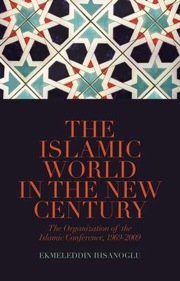The book is a brilliant historic account of the Muslim World’s highest forum, the Organisation of the Islamic Conference, recounting its early years of formation to its present status in the twenty first century. In the Introduction, the author points out, ‘Spread over four continents, the population of the Muslim world covers almost one fifth of humanity. Islam has affected every aspect of the political, cultural and spiritual directions of the Muslim World.’ He also defines the OIC as ‘an expression of a shared will for solidarity and cooperation,’ representing the centuries old concept of the UMMAH. People’s expectations of the OIC rise during periods when their own countries or world Muslims face adversity.
Established in 1969, the OIC has come a long way. In terms of membership, it is the second largest institution after the United Nations. Starting with twenty five members, today it has fifty seven, mostly Muslim majority countries. The OIC serves as a forum for assuming individual and collective positions in international affairs, as well as creating actions aimed at furthering the interests of its Member States.
The reader will find a focus on its recent development during te 2005-8 reforms and restructuring process, which is the primary theme of this book. The OIC’s development has been influenced by major transformations in world political turmoil. It is noteworthy that even though the historical experiences of Muslim peoples were different from each other, it is revealed that religion — Islam — has constantly maintained its importance in the emergence of the new states. Today the place and effect of Islam in Muslim societies and the way faith is reflected in their relations with the wider international community, depends on how and where each country draws the line between religion and politics. It is noteworthy that Islam, has a different place in the workings of society compared to other religions in other countries.
The author points out that injustice and aggression directed against Muslim nations and communities, such as the persistent plight of the Palestinian people, who are subjected to inhuman treatment, and the harsh military interventions conducted against Muslim communities of the Balkans and the Caucasses, particularly the human tragedy that struck Chechniya, Bosnia-Herzegovina and Kosovo, after the dissolution of the Communist bloc — have all created righteous indignation in the Muslim world. He further describes the relations between the Muslims and West as a ‘controversial set of relationships’ with deep-rooted prejudices existing on both sides. The author also points out that there are some radical political movements which use Islam to justify their repugnant and illegitimate practices. One of the main accusations labeled against Islam on the international scene is based on the unjustified and unfounded linking of the practices of these illegal political movements with Islam.
The author derides the vile campaign against the Prophet Muhammed (PBUH), which has naturally led to strong reactions in the Muslim world and warns that such actions exacerbate mistrust among Muslim communities and if Western governments fail to take preventive measures against these unjustified attacks, which tragically translate into violence and desecration of Muslim tombs in Europe — not only will the Muslim world be unable to eliminate radicalism, but new forms of that phenomenon may emerge.
Apportioning the blame on the Muslims of the 11th Sept.2001 attacks on New York has resulted in the lack of confidence on both sides, he says. A question awaiting an answer is: how does the West accept, without scrutiny, the claim of such violent groups that they act on behalf of Islam, given that there is no Islamic reference whatsoever to justify such claim? The OIC as well as other Islamic Institutions have condemned these heinous acts. Thus accepting the culprits’ pretensions only encourages them.
The author says that the principal mission of the OIC today is to achieve modernization and moderation. To implement these principals, the OIC adopted a Ten Year Programme of Action during its session in Mecca in 2005. Socio-economic development, eradication of disease, and the advancement of science and technology were also incorporated. The book aims to address these crucial issues.
The OIC creates the possibility of political support and consideration from the Muslim world, as well as economic assistance. The majority of the OIC members are non- industrialised countries and 21 of these are ‘least developed nations’ and have hopes from the Islamic Development Bank. The OIC’s agenda has expanded over the years to form an all-encompassing body. On the whole the history of the OIC is one of evolution, facing times of hardship and successes, of slow-down and acceleration, but has been forward looking at all times.
The author confirms that in the twenty first century, the OIC has accelerated its momentum by redefining and restating its objectives, igniting a process of modernization and improvement of its operations to achieve greater effectiveness and efficiency. It now plays an important role in modernizing the potential of its Member States. In order to progress, these States need to define the relationship between the religious and political principles, without letting one intrude into the other. The author concludes, “With its vision reformulated, its potential reinvigorated and guided by the Programme of Action and the Charter, the OIC has laid strong foundations for assuming a central role in meeting the future challenges of the twenty first century.”





